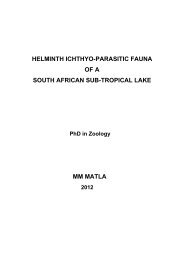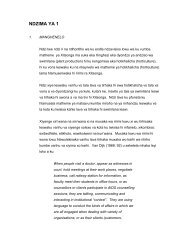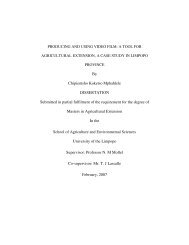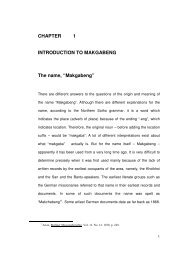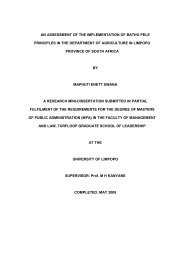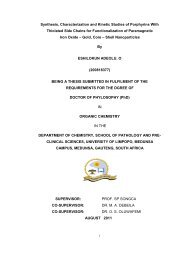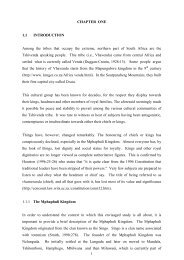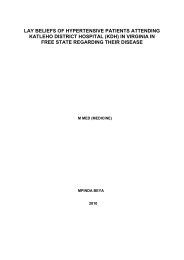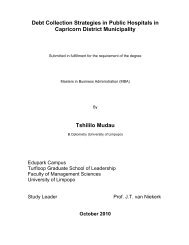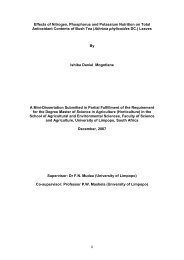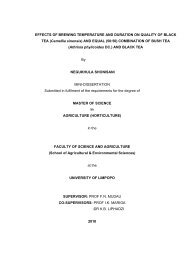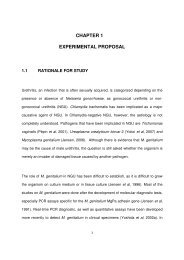Mmushi T MSc (Microbiology).pdf
Mmushi T MSc (Microbiology).pdf
Mmushi T MSc (Microbiology).pdf
Create successful ePaper yourself
Turn your PDF publications into a flip-book with our unique Google optimized e-Paper software.
susceptibility is determined by the absence or presence of a clearing around the test<br />
organism.<br />
1.4.2. Disc diffusion<br />
The disc diffusion method commonly known as Kirby-Bauer is widely used for<br />
antibacterial activity tests (Kelmanson et al., 2000). In this method, one species of<br />
bacteria is uniformly swabbed onto a nutrient agar plate while plant extract is applied to<br />
sterile filter paper discs which are allowed to dry before being placed onto the top layer<br />
of the agar plates (Rasoanaivo and Ratsimamanga-Urveg, 1993). Each extract is tested<br />
in quadruplicates. The relative effectiveness of a compound is determined by comparing<br />
the diameter of the zone of inhibition of bacterial growth around the discs with values in<br />
a standard table.<br />
1.4.3. Well diffusion<br />
The agar well diffusion assay uses a similar method as disc diffusion assay, except that<br />
the extracts are placed into wells made on the solid agar after the inoculation with<br />
standardized bacterial culture. The antibacterial activity is also measured as the<br />
diameter (mm) of clear zone of growth inhibition around the well (Hufford et al., 1975).<br />
Most researchers use agar diffusion assays to determine the antibacterial activity of<br />
extracts (Eloff, 1998b) however there are limitations to this method, mainly because of<br />
the sensitivity of the test to change in operator technique and also in the subsequent<br />
interpretation of zone diameter.<br />
The antimicrobial effect of plant extracts may be inhibited or increased by external<br />
factors or contaminants. The agar type, salt concentration, incubation temperature and<br />
molecular size of the antimicrobial component influence results obtained with agar<br />
diffusion assays. This technique does not distinguish between bactericidal and<br />
bacteriostatic effects and the minimum inhibitory concentration cannot be determined<br />
and it only detects toxicants that can pass through agar (Eloff, 1998b). The technique<br />
works well with defined inhibitors but when examining extracts containing unknown<br />
17



